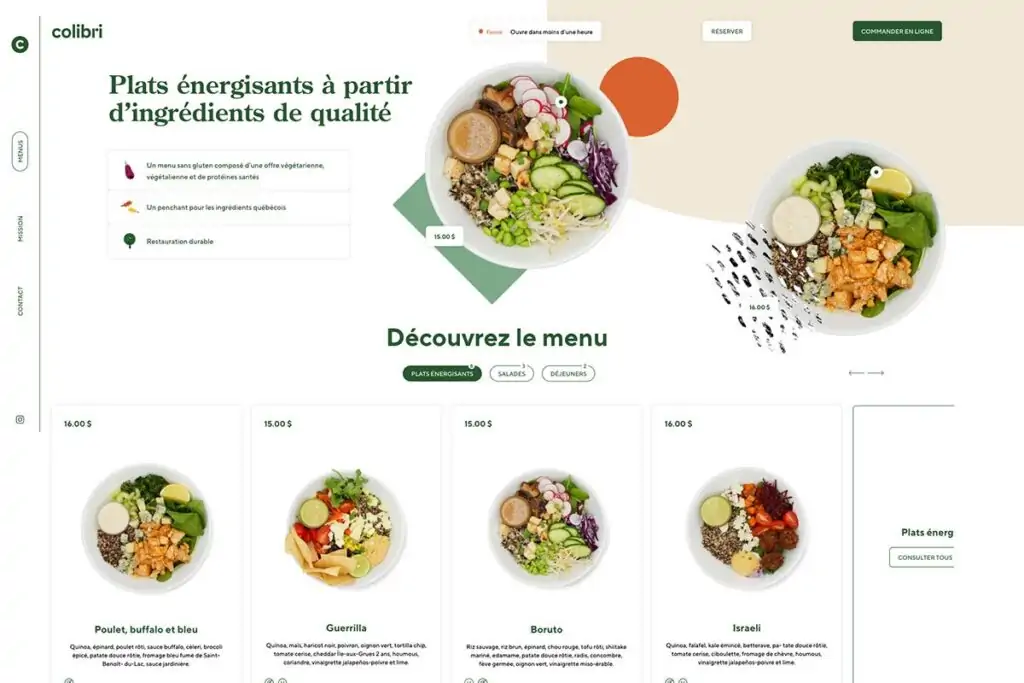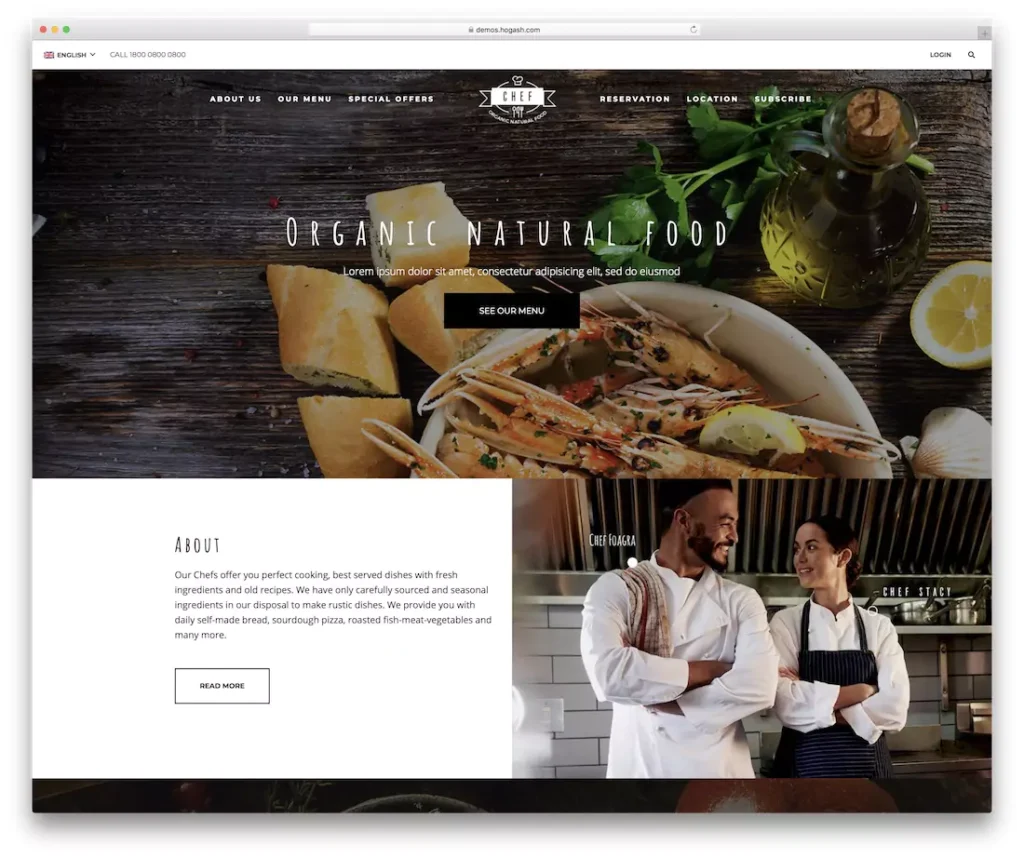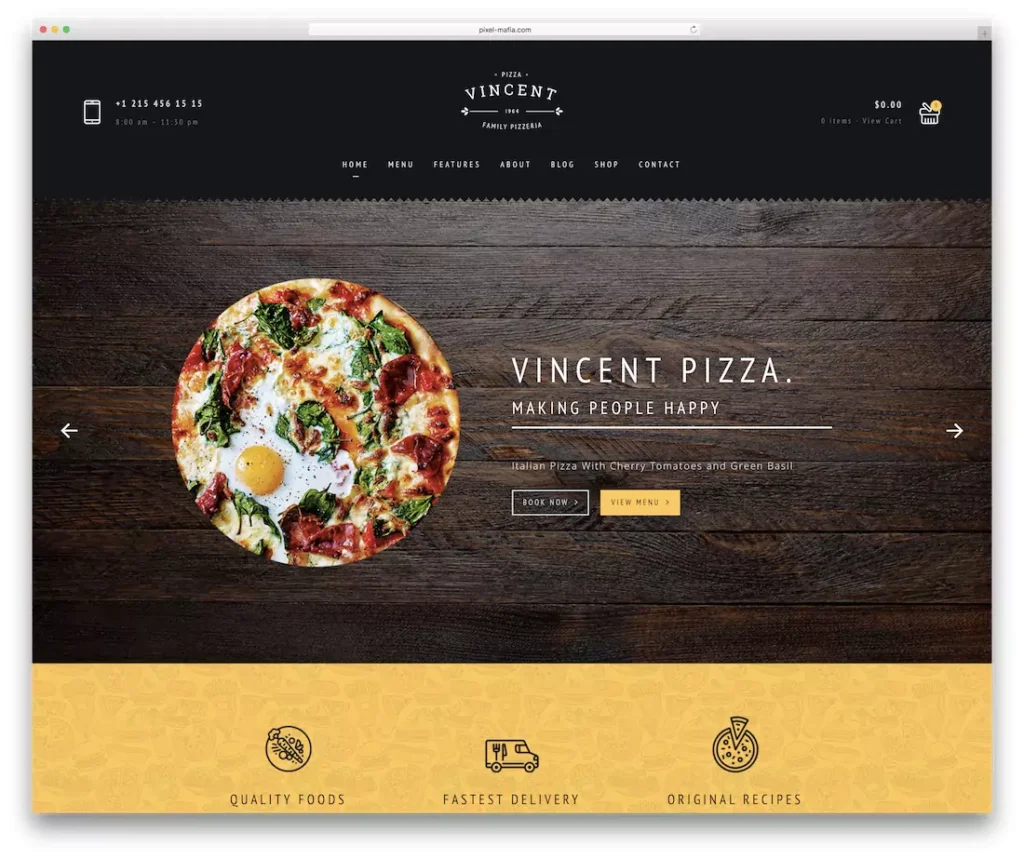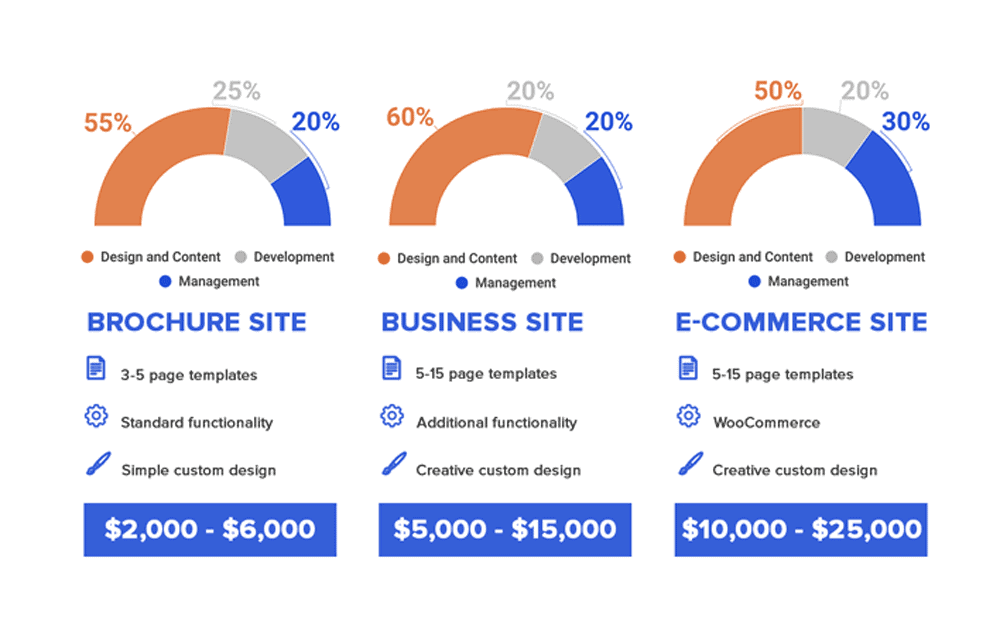Restaurant Web Design: The Secret Recipe for Online Success
Your restaurant's website is often the first impression potential customers will have of your business. Like the front door to a physical restaurant location, your website welcomes patrons and draws them inside. But is your website up to the task, or does it leave customers with a bad first impression?
A poorly designed, outdated, or broken website can turn away customers before they even look at your menu. On the other hand, a well-designed website makes a great first impression, provides valuable information to customers, and helps drive business to your restaurant.
This article explores best practices and creative strategies for an effective restaurant web design that delights customers and brings in business.
Table of Contents
Why Your Restaurant Needs a Good Website

In today's digital age, a website is a must for any restaurant, whether small or informal. Here are some of the key reasons your restaurant needs a well-designed website:
Allows Customers to Find You Online
The vast majority of people search online for restaurants in their area. Your website lets them discover your business and view your menu and offerings. Your site must be mobile-friendly, load fast, and appear in local search results.
Provides Key Information to Customers
Your site lets you share crucial information like your hours, location, menus, pricing, and reservation/catering details. This helps customers decide whether your restaurant suits their needs.
Builds Your Brand Identity
Your website establishes your restaurant's visual brand identity through colour schemes, fonts, and images. It develops your brand's personality and conveys the dining experience you offer customers.
Generates Takeout and Delivery Orders
If you offer takeout or delivery, your website allows customers to place orders online for pickup or delivery conveniently. Easy online ordering is a must in the age of Uber Eats and Doordash.
Allows Customers to Make Reservations
Offering online reservations via your website makes it easy for diners to book tables in advance. This perk provides excellent customer service and helps drive business.
Markets Your Business 24/7
Your website works around the clock as a marketing tool, even when your restaurant is closed. It enables you to communicate promotions, events, and seasonal offerings.
Provides Analytics and Insights
With Google Analytics, you can see valuable data on website traffic, popular pages, conversions, and more. These insights help you improve your marketing and site design.
Critical Elements of an Effective Restaurant Website

Crafting a great website requires carefully considering what content and features to include. Here are some of the essential elements every restaurant site needs:
Appealing Visual Design
Top-notch visual design is critical, especially for the homepage. Use quality food photos, an intuitive layout, and ample white space for an inviting look and feel. Ensure brand consistency in colours, fonts, and style across all pages.
Easy Navigation
The site navigation (menu, buttons, links, etc.) should make it simple for visitors to find what they need. Group info logically, use descriptive page names, and include a site search bar.
Mobile Responsiveness
Given rising mobile usage, the site must be mobile-friendly and render well on smartphones and tablets. Use a responsive design that resizes for all devices.
Clear Call-To-Actions
Call-to-action buttons like “Make Reservation,” “Order Takeout,” or “View Menus” should stand out. Make it obvious how to convert site visitors into paying customers.
Engaging About Page
Help visitors get to know your restaurant with an “About” page covering your culinary philosophy, chef bios, awards, community involvement, and restaurant story. Photos and videos are a nice touch.
Informative Menus Page
Feature menus prominently on the site. Display engaging menu photos or embed online menus from your POS system. If menus change seasonally, keep this page updated.
Google Maps Integration
Embed a Google Map highlighting your restaurant's address and surrounding area on your location page. This makes you easier to find.
Online Ordering/Reservations
Offer seamless online reservations and takeout/delivery ordering if feasible. Platforms like OpenTable or ChowNow make this achievable without coding skills.
Social Media Links
Linking to your social profiles helps customers follow you on Facebook, Instagram, Twitter, etc. Social expands your digital presence.
Top Tips for Creating a Standout Restaurant Website

Beyond including crucial elements, how do you make your site shine and stand apart from competitors? Below are creative tips for creating an exceptional restaurant website:
Showcase Your Signature Dishes
Highlight drool-worthy photos of your most popular or photogenic menu items. This conveys your food quality and unique offerings at a glance.
Share Customer Testimonials
Sprinkle positive customer reviews and testimonials throughout your site. These social proof statements build credibility and trust.
Tell Your Restaurant's Story
Share your founding story, heritage, culinary philosophy, or team background to forge an emotional connection with visitors. Weave in history and personality.
Feature Your Chefs
Introduce visitors to your talented chefs through bios, interviews, videos, or photo galleries. This helps humanise your restaurant.
Highlight Awards and Press Mentions
Display logos of any awards your restaurant has won or news outlets you've been featured in. Fame and accolades build authority and prestige.
Promote Upcoming Events
Use your website to market special events, wine dinners, cooking classes, or seasonal promotions. Give visitors an incentive to come in.
Share Interior Photos
Show off your dining room, bar, patio, or exterior through photos. This sets visitor expectations and conveys ambience.
Run Promotions and Contests
Engage visitors by promoting discounts, coupon codes, or social media contests to redeem in your restaurant. Encourage signups with giveaways.
Blog About Food and Drinks
Launching a restaurant blog allows you to post recipes, cocktail how-tos, and insights into dishes, giving customers added value.
Highlight Your Takeout Offerings
If you offer takeout and delivery, dedicate a section of your site to promoting these services and ease of ordering.
Remember SEO!
While design and content are crucial, you should also optimise your site for search engines through SEO best practices. This helps people find your website organically when searching for restaurants. Key tactics include:
- Keywords: Research relevant keywords related to your cuisine, location, and offerings to work into content naturally. Examples of Italian restaurants could include “Italian Restaurant in NYC”, “Little Italy Pizza”, and “family-friendly Italian dining”.
- Alt Text: All images should have descriptive alternative text and captions featuring keywords.
- Title Tags: Title tags help search results list your site accurately. Include important keywords.
- Metadata: Ensure site and page metadata descriptions include optimal keywords.
- Links: Try to get quality sites in your niche to link back to your website, which raises authority.
- Local Listings: Create and optimise free listings on Google My Business, Yelp, TripAdvisor, and other local platforms.
- Site Optimisation: Use a sitemap, update content regularly, optimise page load speeds, etc.
The technical side of SEO takes work but maximises discoverability. Partnering with an SEO agency can also help take your website's organic traffic to the next level.
Crafting Compelling Content
Your website copy should whet appetites and paint a picture of the dining experience. Here are some key elements to include:
Attention-Grabbing Headlines
Use succinct, descriptive headlines and subheads to break up blocks of text. For example, “Rustic, Farm-to-Table Italian Cuisine” or “A Paw-some Menu for Your Furry Friends.”
Vibrant Menu Descriptions
The menu is the highlight of your site: spotlight signature dishes and fan favourites with tempting descriptions that share flavours, textures, and cooking methods.
About Us
Share your restaurant's unique story and origins. Let the owners' personalities shine through to foster an emotional connection. Cover your service philosophy commitments to quality and community.
Location/Hours/Contact Info
This practical information helps customers easily plan their visit. Include an embedded map to provide directions.
Blog
A blog reveals the latest happenings at your restaurant. Share new menu launches, events, behind-the-scenes photos, chef and farmer spotlights, and more.
Reviews
Positive reviews build credibility while showing you care about customer feedback. Embed excerpts from leading sites like Yelp and Google.
Optimising for Search Engines
Driving traffic to your site requires search engine optimisation (SEO). Here are tips for improving SEO and rankings:
- Use targeted keywords – Include relevant keywords in headlines, content, URLs, alt text, etc. Tools like Google Keyword Planner can identify terms people search for.
- Optimise site speed – Faster load times improve SEO. Compress images, minimise redirects, and enable browser caching.
- Improve technical SEO – Proper URL structures, XML sitemaps, and Schema markup boost crawling.
- Produce new content – Search engines favour sites regularly, adding fresh, high-quality content. Update your blog weekly.
- Get local listings – Create Google My Business and Bing Places accounts—list with directories like Yelp.
- Build quality backlinks – Earn links from respected industry sites to enhance authority and rankings.
Engaging Website Features

Beyond content, interactive elements create an immersive user experience. Consider including:
Photo Gallery or Video
Allow visitors to take a virtual tour of your dining room, bar area, patio, etc. Videos look to your restaurant's lively atmosphere.
Online Ordering/Reservations
Offer seamless online booking for tables or to-go orders. This provides a convenient customer experience.
Customisable Menus
Let guests build personalised menus, ideal for catering. They can select dishes, quantities, delivery/pickup times, etc.
Loyalty Program Portal
Give members access to redeem rewards, upcoming specials, member-only content, and more.
Monthly Newsletter Signup
Collect emails for your mailing list to share announcements and offers. Offer an incentive like a free dessert.
Crafting an Appetising Mobile Experience
An increasing number of customers will view your site on mobile devices. Ensure your design adjusts seamlessly for smaller screens with these tips:
- Use a responsive web design to optimise layouts for any device.
- Avoid narrow columns of text that are difficult to read.
- Ensure buttons and links have enough space around them for accurate clicking.
- Check that images and videos still load quickly to avoid frustration.
- Include larger tap targets for improved usability.
- Avoid excessive scrolling – condense content for mobile.
With mobile outpacing desktop usage, an optimised experience is mandatory. Test your site on multiple devices to catch any issues.
The Proof is in the Pudding: Analysing Results
Once your website is up and running, use analytics tools to spot opportunities for improvement. Track metrics like:
- Bounce rate – High rates indicate the content is not engaging users.
- Pages per session – Low numbers mean visitors lack reasons to explore further.
- Traffic sources – See which channels drive the most visits to focus your marketing efforts.
- Conversion rates – Measure online reservations or ordering to increase bookings.
- Site speed – Faster load times reduce abandonment rates.
Regularly review analytics and tweak pages to increase meaningful interactions. This recipe will help satisfy even the hungriest of website visitors.
Do's and Don'ts of Restaurant Website Design
As you embark on designing your restaurant's website, keep these handy dos and don'ts in mind:
Do:
- Make it mobile-friendly and fast-loading
- Use quality photos and graphics
- Craft engaging content that tells your story
- Include online ordering/reservations if possible
- Design for simplicity and ease of use
- Focus on call-to-action buttons above the fold
- Update content frequently with news and specials
Don't:
- Use cheap template site builders with little customisation.
- Make customers navigate multiple pages to find info
- Use low-res photos or clipart
- Leave out key details like address, phone, hours
- Use funky/unreadable fonts or colour schemes
- Litter the site with excessive ads or popups
- Forget to keep the menu and hours updated
Restaurant Website Costs and Options

What can you expect to invest in a custom restaurant website? Costs vary significantly based on options:
DIY site builder: $10-$60 per month. It allows anyone to make a site with little technical know-how, but customisation and functionality is limited.
Custom-designed site: $2,500-$15,000+ for the initial build. Offers an entirely custom site tailored to your brand but requires hiring a web design firm.
Restaurant CMS platform: $149-$300 per month. DineSite and Restaurant Engine offer pre-built restaurant site templates within their CMS—more flexibility than DIY options for a monthly fee.
Maintenance costs: $500-$2,000 per month. Many restaurants pay agencies a monthly fee for ongoing management, updates, hosting, SEO, and marketing.
A professional web design firm can best advise on the right solution based on your budget, needs, and technical abilities. While not free, a great website delivers immense ongoing value.
Turn Your Website into a Competitive Advantage
In today's digital world, your website is one of your restaurant's most valuable marketing assets. A well-designed site makes a fantastic first impression on customers, provides essential info, enables online orders, bolsters your brand, and helps drive traffic through SEO and promotions.
Rather than an afterthought, your website should be a top priority that receives care and investment. Treat your site as the digital epicentre for attracting and engaging customers. With creativity and effort, you can craft a world-class website that builds lasting customer loyalty and helps your restaurant thrive.
Frequently Asked Questions About Restaurant Web Design
How do you spice up your restaurant's online presence? Here are answers to common questions about designing a standout website:
What should my restaurant website include?
Essentials are attractive images of food and your space, online ordering/reservations, menus, location/hours, and engaging content covering your story, offerings, and mission.
How much does a restaurant website cost?
Costs range from $3,000 – $15,000+ depending on features. Custom designs are more expensive than templates. Factor in ongoing maintenance fees, too.
How can I make my site mobile-friendly?
Use a responsive design that adapts to fit screens of all sizes. Avoid tiny text or crowding. Check site speed on mobile and reduce image file sizes if slow.
What is SEO, and why does it matter?
SEO gets your site found via search engines like Google. It involves optimising content for relevant keywords and building quality backlinks. High rankings equal increased traffic.
Should I hire a web designer or use a DIY site builder?
A professional designer creates a custom site aligned with your brand. DIY options like Squarespace offer more limited but affordable control. Weigh time vs. budget.
A visually appealing, intuitive website is the cornerstone of your restaurant's brand. With this recipe for successfully blending design, content, and technical elements, you'll have customers clamouring to visit – both online and to your table. Bon appétit!
